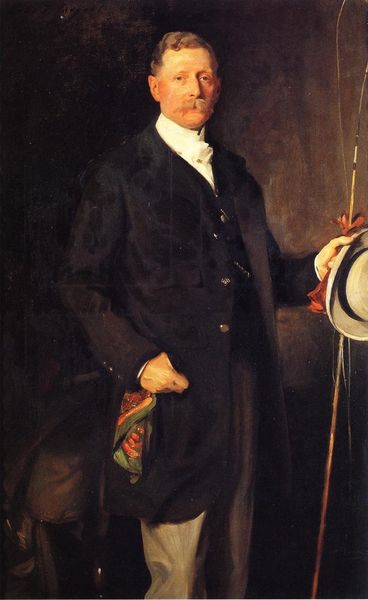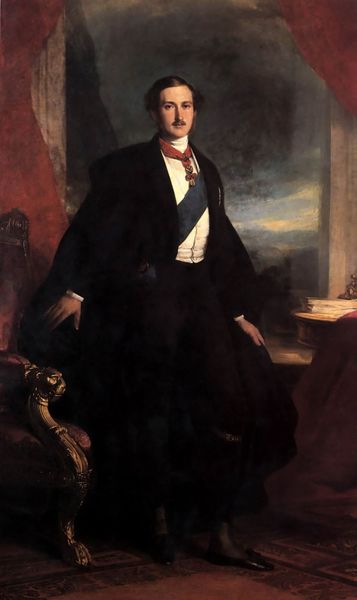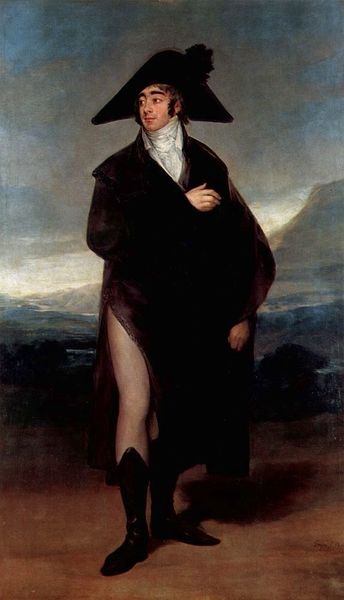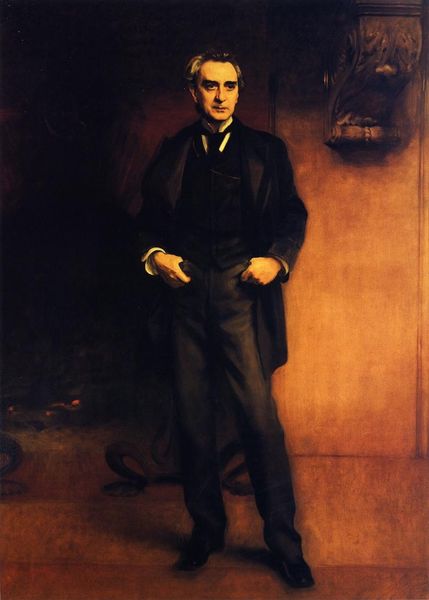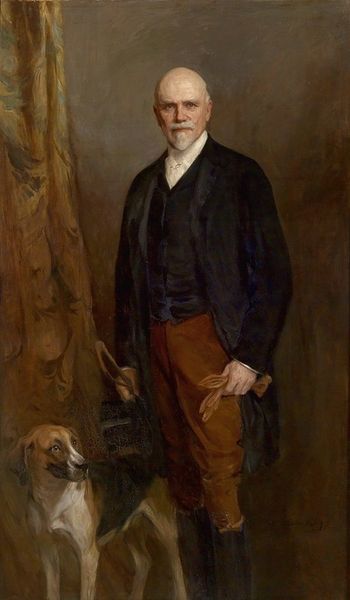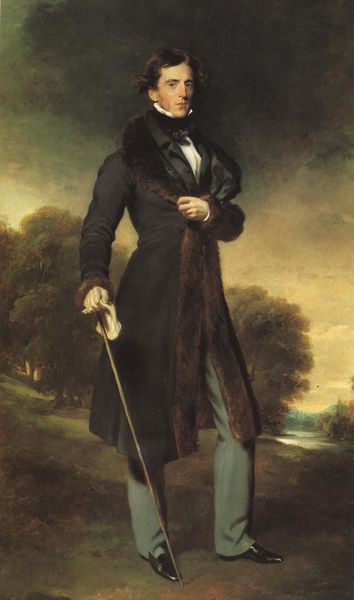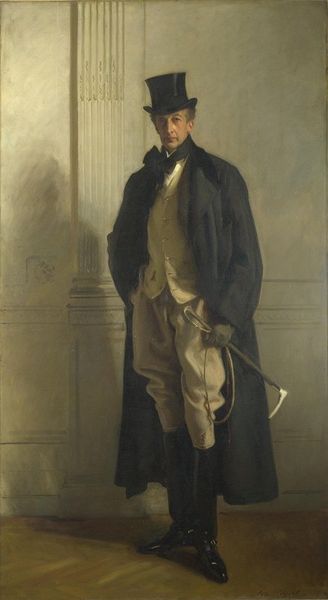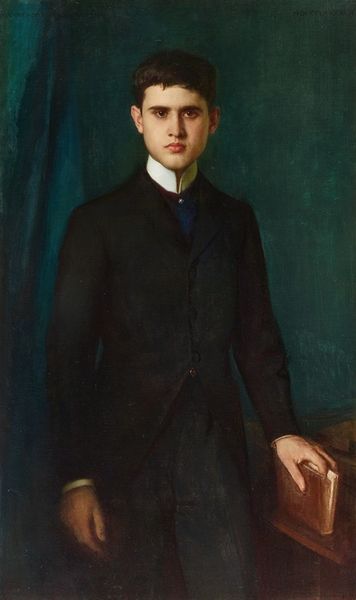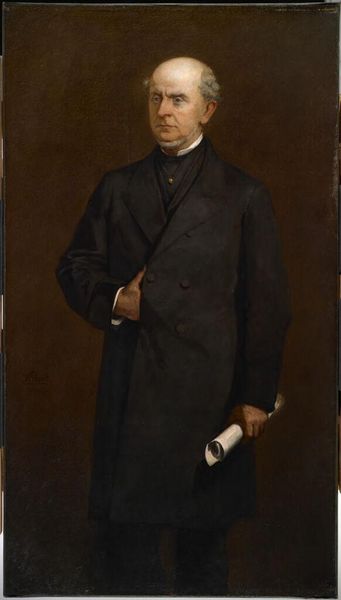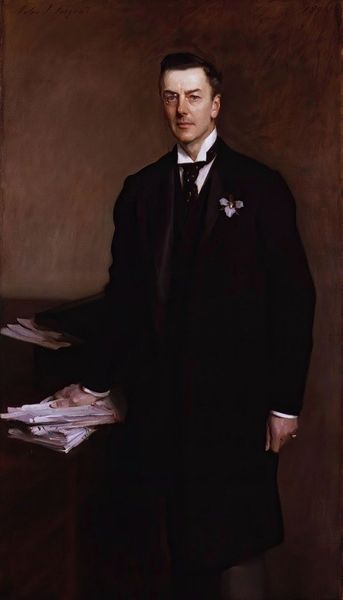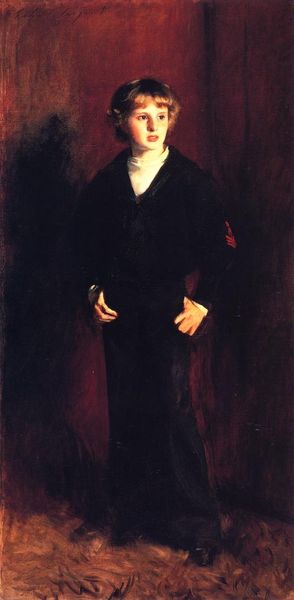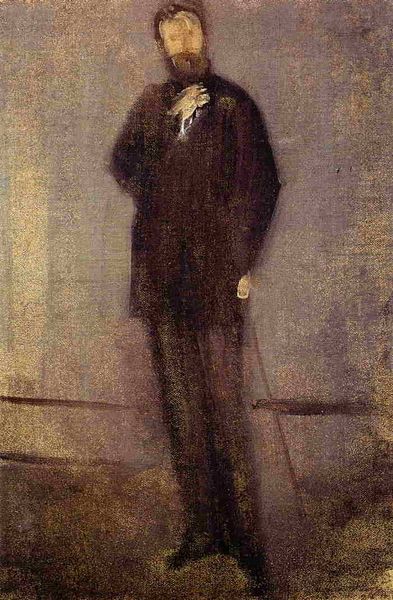
painting, oil-paint
#
portrait
#
painting
#
oil-paint
#
figuration
#
romanticism
#
history-painting
#
portrait art
Dimensions: 218 x 143 cm
Copyright: Public domain
Editor: Delacroix's "Portrait of Baron Schwiter," created in 1827, strikes me with its air of melancholic elegance. The baron's pose and the surrounding landscape evoke a sense of Romantic introspection. What historical contexts shape your reading of this painting? Curator: That melancholic air is key, and it’s crucial to place this work within the social and political currents of the Restoration era. The French Revolution, though decades past, continued to reverberate. Notice how Delacroix doesn’t portray Schwiter as a man of action or power, but rather as a thoughtful, perhaps even world-weary individual. Do you think this choice of representation challenges the traditional heroic portraiture of the aristocracy? Editor: It does feel like a subtle critique. He's not flaunting wealth or status. The dark palette and slightly disheveled hair hint at something deeper, maybe a quiet questioning of the established order? Curator: Precisely. Consider also Delacroix's own revolutionary spirit, evident in later works like "Liberty Leading the People." While "Portrait of Baron Schwiter" is more subdued, it carries that same undercurrent of challenging convention. The romanticism wasn’t just about aesthetic pleasure; it was often tied to ideas of individualism and liberty that questioned existing hierarchies. What do you make of the almost theatrical backdrop, with its turbulent sky? Editor: It heightens the drama and intensifies that feeling of introspection, almost as if the baron’s inner turmoil is reflected in the landscape. This really encourages thinking about art history not as a series of isolated objects, but as products of and participants in complex historical and social dialogues. Curator: Exactly. By understanding the contexts of class, power, and societal anxieties, we can interpret this portrait not just as a likeness but as a powerful commentary on a specific historical moment. Editor: Thanks! I'll never look at another portrait the same way again. It highlights how much socio-historical factors weigh in on even the most simple seeming artwork.
Comments
No comments
Be the first to comment and join the conversation on the ultimate creative platform.
